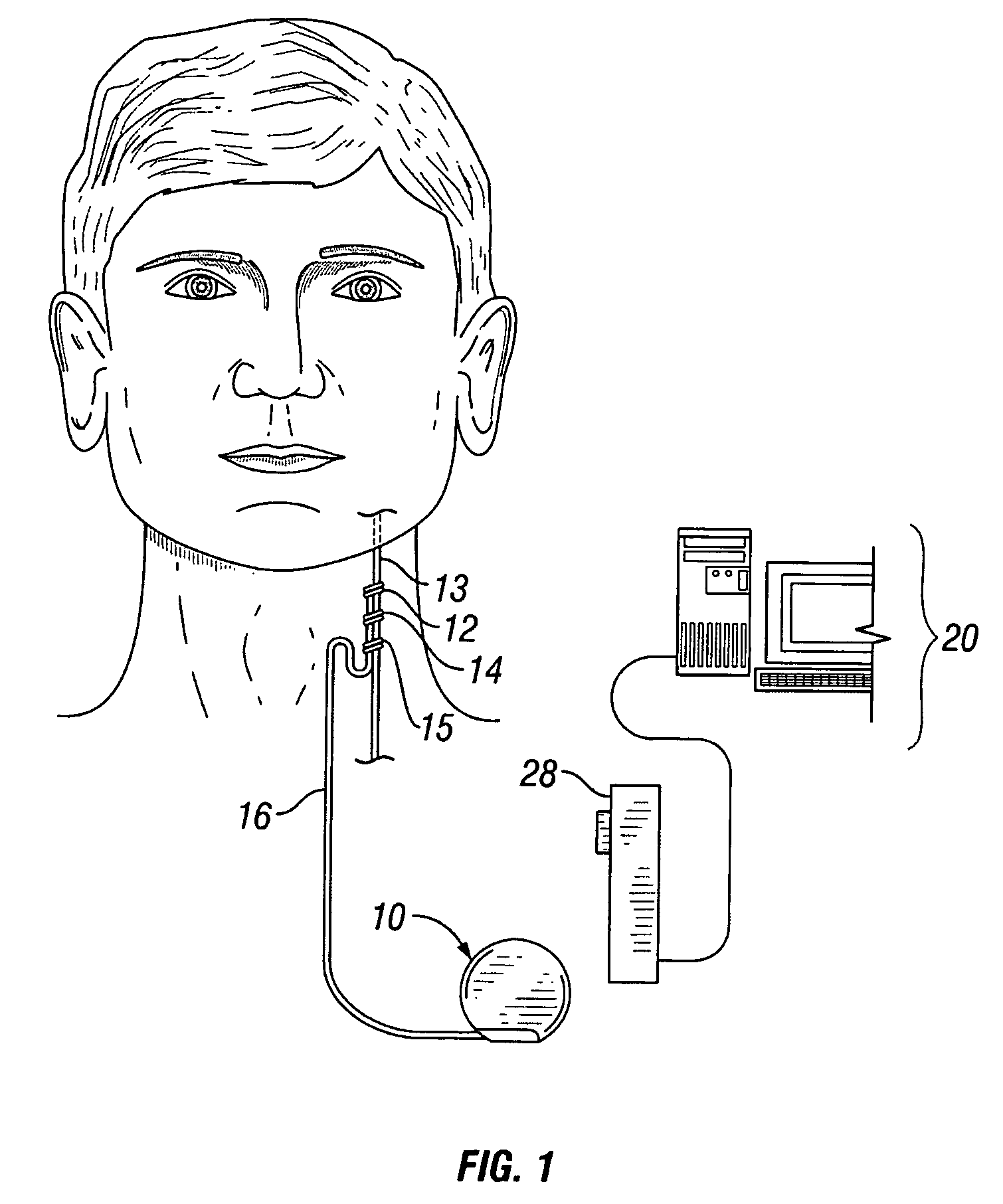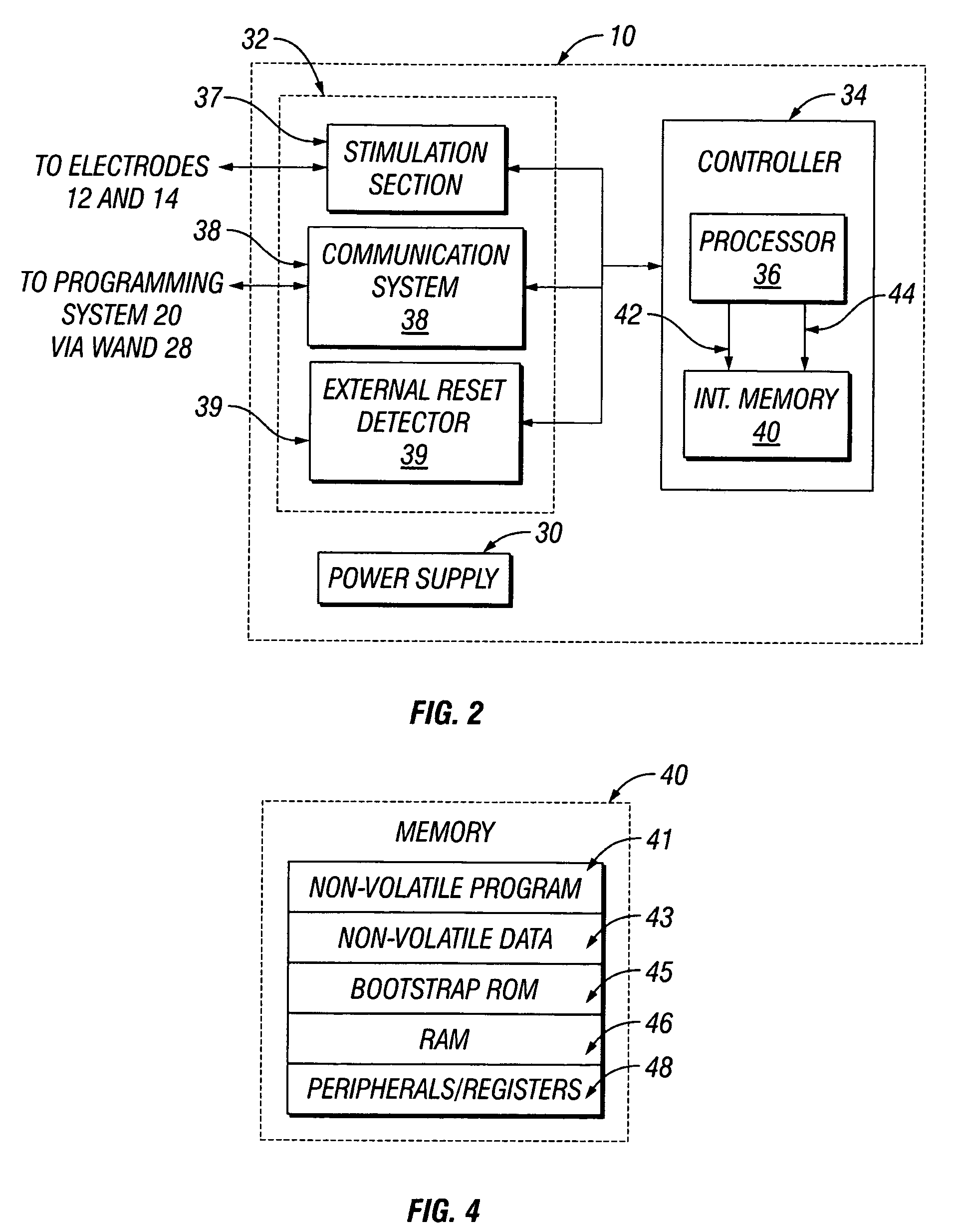Implantable medical device with reconfigurable non-volatile program
a medical device and non-volatile programming technology, applied in the field of implantable medical devices, can solve the problems of inability to reprogramme, volatile program contents, loss,
- Summary
- Abstract
- Description
- Claims
- Application Information
AI Technical Summary
Benefits of technology
Problems solved by technology
Method used
Image
Examples
Embodiment Construction
[0030]The present invention is susceptible to implementation in various embodiments. The disclosure of specific embodiments, including preferred embodiments, is not intended to limit the scope of the invention as claimed unless expressly specified. In addition, persons skilled in the art will understand that the invention has broad application. Accordingly, the discussion of particular embodiments is meant only to be exemplary, and does not imply that the scope of the disclosure, including the claims, is limited to specifically disclosed embodiments.
[0031]FIG. 1 illustrates an implantable medical device (“IMD”) 10 implanted in a patient. The IMD 10 may be representative of any of a variety of medical devices. At least one preferred embodiment of the IMD 10 comprises a neurostimulator for stimulating a neural structure in a patient, particularly a neurostimulator for stimulating a patient's cranial nerve such as a vagus nerve 13. Although the IMD 10 is described below in terms of a v...
PUM
 Login to View More
Login to View More Abstract
Description
Claims
Application Information
 Login to View More
Login to View More - R&D
- Intellectual Property
- Life Sciences
- Materials
- Tech Scout
- Unparalleled Data Quality
- Higher Quality Content
- 60% Fewer Hallucinations
Browse by: Latest US Patents, China's latest patents, Technical Efficacy Thesaurus, Application Domain, Technology Topic, Popular Technical Reports.
© 2025 PatSnap. All rights reserved.Legal|Privacy policy|Modern Slavery Act Transparency Statement|Sitemap|About US| Contact US: help@patsnap.com



